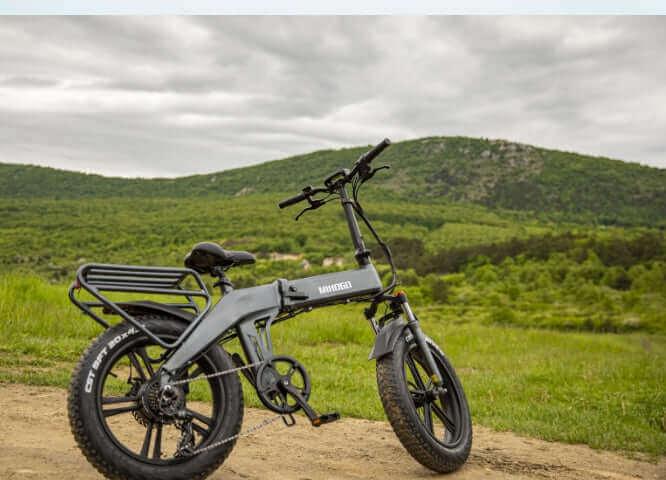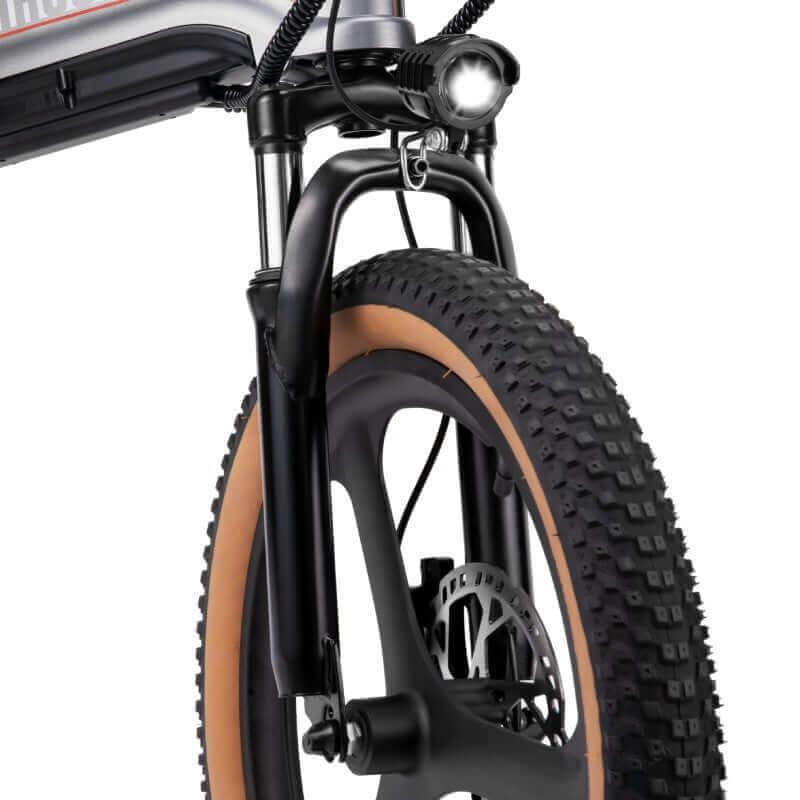| 1. | With the rise of eco-friendly transportation options, electric bikes, or eBikes, have become a popular choice among many. These bikes, equipped with an integrated electric motor, can be used for propulsion and offer a unique blend of speed, convenience, and fun. But many people often wonder, "Are electric bikes hard to ride?" Let's delve into this topic and dispel some myths surrounding it.
| 2. | The Concept of Pedaling in Electric Bikes |
Understanding how pedaling works in eBikes is key to grasping their operation and ease of use.
| 3. | Why Is My Bike Hard to Pedal? |
There can be several reasons why your bike is hard to pedal. Some common factors include incorrect gear selection, low tire pressure, brake rubbing against the wheel, or even a misaligned chain. However, with eBikes, pedaling can feel significantly easier thanks to the electric assist.
| 4. | Do You Have to Pedal on an Electric Bike? |
This is a common question among potential eBike riders. The answer is, it depends on the type of eBike. Pedal-assist eBikes, also known as pedelecs, require some degree of pedaling but also offer an electric assist to make the task less strenuous. On the other hand, throttle-based eBikes can run without any pedaling at all.
| 5. | Can You Pedal an Electric Bike? |
Yes, you can certainly pedal an electric bike. In fact, pedaling is encouraged in many eBikes to increase the range and maintain physical activity. Some models even offer varying levels of pedal assist to suit your fitness levels and riding conditions.
| 6. | The Speed of Electric Bikes Without Pedaling |
A notable feature of electric bikes is their ability to attain decent speeds, even without pedaling.
| 7. | How Fast Do Electric Bikes Go Without Pedaling? |
Throttle-based electric bikes can typically reach speeds of up to 20 miles per hour (mph) without pedaling. However, this largely depends on factors such as battery power, terrain, and rider weight.
| 8. | Understanding eBikes without Pedals |
eBikes without pedals, or throttle-based eBikes, operate more like motorcycles. They don't require any pedaling effort and are an excellent option for those seeking a less physically demanding ride.
| 9. | Pedal Electric Bike Review |
If you're considering an eBike, it's important to read reviews and make an informed decision. A detailed pedal electric bike review will provide insights into the bike's performance, comfort, speed, and overall value for money.
| 10. | Are Electric Bikes Hard to Ride? |
So, are electric bikes hard to ride? In short, no. Electric bikes are not more challenging to ride than regular bikes. The presence of electric assistance makes them easier and more comfortable to ride, especially over long distances or steep terrains.
| 11. | Factors that Make Riding an Electric Bike Easier |
Several factors contribute to the ease of riding an eBike. These include pedal assist levels, a lower center of gravity for increased stability, and the ability to maintain higher average speeds with less effort.
| 12. | Stable Bikes and Their Features |
Stable bikes, such as low-step or step-through eBikes, offer easy mounting and dismounting. They are excellent options for those prioritizing comfort and stability in their ride.
| 13. | Things to Know Before Buying an Electric Bike |
Before making an eBike purchase, it's important to understand your needs, the type of eBike that suits you, its battery life, speed capabilities, and overall build quality. Read more on what to know before buying an electric bike here.
| 14. | Are Electric Bikes Easier to Ride? |
Yes, electric bikes are generally easier to ride. They provide assistance when you're pedaling, which can make a substantial difference in your biking experience, especially during uphill climbs or long-distance rides.
| 15. | Journey Electric Bikes |
Journey electric bikes are a great example of eBikes that blend comfort, stability, and electric assistance. They are designed to make every ride enjoyable and less strenuous.
| 16. | Conclusion |
In conclusion, riding an electric bike is not harder than riding a traditional bike. In fact, the additional features like pedal assist make it easier and more comfortable, especially for long rides or uphill terrains. With a variety of eBike types available, there's an electric bike for every rider.
| 17. | FAQs |
-
Do you have to pedal on an electric bike? No, it depends on the type of electric bike. Pedal-assist eBikes require pedaling, while throttle-based eBikes can run without pedaling.
-
How fast can electric bikes go without pedaling? Throttle-based electric bikes can reach speeds up to 20 mph without pedaling.
-
Are electric bikes hard to ride? No, electric bikes are not hard to ride. The electric assistance makes the ride easier and more comfortable.
-
Are electric bikes easier to ride than regular bikes? Yes, the electric assistance provided in eBikes makes them generally easier to ride than traditional bikes.
-
What should I know before buying an electric bike? It's important to understand your needs, the type of eBike that suits you, its battery life, speed capabilities, and overall build quality.
For more insights on how hard it is to pedal an electric bike, click here.








